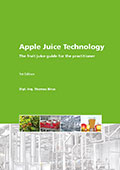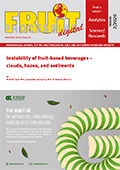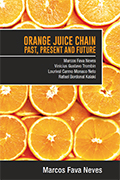Bevolution Group, one of most diverse and innovative beverage manufacturers in the US, announced the launch of Dr. Smoothie’s Watermelon Kiwi Refreshers. This is the latest flavour of its widely successful Refreshers line of beverages to help consumers refresh and recharge with a hint of green coffee extract.
Dr. Smoothie Refreshers are crafted from real fruit juice and green coffee extract, which is a natural energy boost that consumers will love any time of the day. These fresh-tasting beverages offer more than just simple refreshment.
The new Watermelon Kiwi Refreshers joins a growing portfolio of Dr. Smoothie Refreshers that include Strawberry Acai; Watermelon Cucumber Mint; Wildberry Hibiscus; Peach Mango; Blood Orange Coconut Ginger; and Dragon Fruit Lychee.
These lightly caffeinated beverages are perfect for smoothie shops, cafes, bars or any foodservice establishment that caters to consumers seeking a unique, premium option for their beverage menu that delivers a blast of refreshment with a great taste.
Just like the other Refreshers beverages, the new Dr. Smoothie Watermelon Kiwi Refreshers is just pure goodness: no artificial colours or preservatives, no HFCS, sweetened with cane sugar and stevia, shelf-stable, made with real fruit juice and natural flavours, gluten-free, lactose-free, vegan and blended in the US.
Dr. Smoothie Refreshers Watermelon Kiwi are available in 46 Fl oz, shelf-stable bottles and are sold to foodservice distributors or direct in the US.
Plant & Food Research scientists and collaborators from the USA have compiled more than 30 years of field-based data from kiwifruit research to create “digital twins” of pollination processes in kiwifruit orchards, and have used these to predict how growers can optimise their fruit set.
Digital twins are virtual replicas of physical systems – in this case mathematical models of the biology of the plants and the behaviour of pollinating bees. These digital twins give researchers the ability to examine complex scenarios which examine multiple, intertwined factors at once. These types of trials are difficult or impossible to test in field – running a full combination of even six variables would require more kiwifruit orchards than exist in New Zealand.
Using this digital twin, the researchers predict that optimal fruit set is achieved with 60-75 % female flowers in the orchard; something that growers can achieve by select pruning of male flowers. Most pollination benefit is gained from the first 6-8 honey bees/1000 flowers, with diminishing returns thereafter. The research suggests that fruiting success is more sensitive to variation in plant traits and the female-to-male flower ratio than bee density, provided this minimum density is achieved.
Dr David Pattemore, pollination scientist at Plant & Food Research and leader of the research team, says, “This digital twin allows us to achieve something we couldn’t have done before – simultaneous testing of the plant-based factors and the pollinator-based factors. It now provides us with a platform to test many more questions and develop recommendations for growers that can be confirmed in field trials.
“The prediction should give kiwifruit growers confidence that what they have been practicing is more or less on the right track. The model provides strategies for improving crop management, such as selection of male and female cultivars which have their peak bloom at the same time, establishing the right balance of female to male flowers in the orchard and placing the sufficient numbers of hives to maintain more than 6 bees per 1000 flowers in the orchard to optimise yield.”
The project is part of a wider programme to develop digital twins for pollination, using a range of different modelling approaches to investigate how different pollination factors interact and influence kiwifruit production. Although initially designed to investigate honey bees pollinating kiwifruit vines, the models can be adapted to suit a wide range of crop species and pollinators. The team is currently working to scale up the model to investigate more complex questions such as the influence of diverse pollinator species and the effect of the spatial layout of orchards. These digital twins could potentially be used as the foundation for the development of decision support tools for growers, to guide their orchard and pollination management to optimise yields.
The paper titled “Orchard layout and plant traits influence fruit yield more strongly than pollinator behaviour and density in a dioecious crop” has been published in PLOS.
Customers looking for their last sips of summer can find two new delicious and vibrant green drinks, the Kiwi Starfruit Starbucks Refreshers® Beverage and the Star Drink, now available at Starbucks stores across the U.S. Following a successful launch in Canada earlier this summer, the drinks are the newest refreshing beverages to join Starbucks permanent menu.
Customers can use the Starbucks® App to find a store nearby, order ahead and have contactless payment. And for those who want their favorite Starbucks drinks and food without leaving home there is always Starbucks® Delivers.
New Kiwi Starfruit Starbucks Rfreshers Beverage
A tropical combination of starfruit flavored juice and real kiwi pieces, hand-shaken with ice. Now on the permanent menu to transport you to summer with every sip, no matter the time of year. With less than 100 calories in a Grande (16 fl. oz. beverage), the Kiwi Starfruit Starbucks Refreshers joins the Starbucks Refreshers platform, alongside customer-favorites Strawberry Açaí Starbucks Refreshers®, Very Berry Hibiscus Starbucks Refreshers® and Mango Dragonfruit Starbucks Refreshers®.
New Star Drink
This refreshing new beverage adds coconutmilk to our new Kiwi Starfruit Starbucks Refreshers Beverage for a creamy and refreshing sip that’s under 200 calories in a Grande (16 fl. oz. beverage). Now on the permanent menu alongside other creamy customer favorites like the Pink Drink, Violet Drink and Dragon Drink.
New Zealand Kiwifruit Growers Incorporated (NZKGI) supports the Ministry of Social Development’s (MSD) declaration of a labour shortage for the kiwifruit industry in the Bay of Plenty and the extension of the labour shortage in the Hawkes Bay. The BOP declaration announced is for the period 15 April until 27 May 2019.
There is a current shortfall of over 1,400 vacancies in the Bay of Plenty’s kiwifruit industry which is expected to increase to 3,800 at harvest’s peak around mid-April. There was a shortfall of 1,200 vacancies at the peak of harvest in 2018.
NZKGI CEO Nikki Johnson says, “The industry has been working hard to attract labour for this year’s harvest. NZKGI has been running a media campaign to promote work in our sector and early signals indicate that this has gone some way in reducing the number of vacancies.
“However, it is vital to our industry that there is enough seasonal labour for harvest, and we currently don’t have enough people to pick and pack the intended crop. So it is entirely prudent and good risk management for MSD to take this step in support of our campaign.
“We would encourage people – kiwis and visitors – to come and enjoy working in an industry that exports an iconic piece of kiwiana overseas.”
Kiwifruit industry employers have been working closely with the Ministry of Social Development (MSD) to place New Zealanders in vacant roles. Between January and April 2019, MSD has placed nearly 500 job seekers into the kiwifruit industry. Despite this more workers are still needed. The declaration of a seasonal labour shortage allows overseas visitors who already hold visitor visas to apply to vary the conditions of their visas for working in kiwifruit in the Bay of Plenty.
Overseas visitors are encouraged to visit the New Zealand Immigration website where detailed information about varying the conditions of a visa can be found.
To date over 90 % of this season’s total kiwifruit crop is yet to be harvested. It is forecast that a similar amount of fruit is required to be packed this year in comparison to last year. This includes an increase of 12 % of SunGold kiwifruit which requires packing in a short period of time.
Johnson says NZKGI seeks to employ New Zealanders as a first priority, especially kiwis who live in regions with orchards and packhouses. Work and Income has given help to people that need transport from other parts of BOP and other Work and Income clients who would like to access this should contact their local office for support. “However, because of the low unemployment rate this is not always possible, and other sources of workers, such as those from the Recognised Seasonal Employer (RSE) scheme and backpackers, are also required.”
She says the industry continues to have robust discussions with Government around increasing the number of workers available under the RSE scheme, as well as other avenues to meet demand during harvest.
NZKGI has recently secured co-funding and employed a labour coordinator to connect employers with workers over harvest and analyse current and future labour demands of the kiwifruit industry, and will use this information to deal with industry growth projections. A University of Waikato report forecasts that the kiwifruit industry contribution to the Bay of Plenty’s GDP will increase 135 % by 2030 to $2.04 billion and require 14,329 new kiwifruit jobs.
The kiwifruit industry is an important contributor to the local Bay of Plenty economy, currently contributing $867 million to the regions GDP and employing 10,762 FTE in the year 2015/2016. The last declaration of a labour shortage for the kiwifruit industry was made in 2018 when the unemployment rate in the Bay of Plenty was 5.9 %[1]. The current unemployment rate is 4.8 %[2].
- [1] As of December 2017. Source: Infometrics
- [2] As of December 2018. Source: Infometrics









